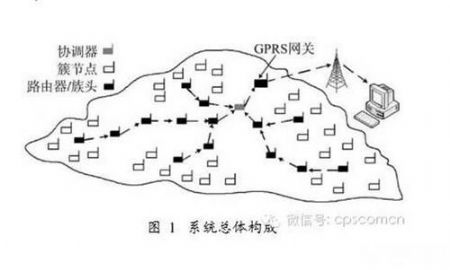In response to these issues, we should pay attention to these types of emergencies.
1. Pre-warning, that is, the design of landslide warning system
There are many methods and means for monitoring landslides at home and abroad, which can be roughly divided into two major categories: wired and wireless. As the landslide monitoring area has complex geographic conditions, difficulty in line setup, and power supply, the cable system is deployed. It is very difficult, system maintenance is very inconvenient, and the reliability of the monitoring network structure is not high. Many of them simply connect the sensor monitoring nodes together. When a sensor node fails, it will affect the normal operation of the following nodes, thus affecting the entire system. Effectiveness, and the information monitored by many monitoring systems is very limited. It cannot provide sufficient data support for correct and timely forecasting and early warning, thus affecting the reliability of the system. Existing wireless monitoring methods such as GPS and GIS have high equipment costs, while Synthetic Aperture Radar Interferometry (InSAR) has the characteristics of all-weather, continuous acquisition of information and high spatial resolution. However, this method requires high quality of interferometric phase images. Requires high-resolution satellite remote sensing images, which determine that it is not suitable for a wide range of applications and applications.

Wireless Sensor Networks (WSN, Wireless Sensor Networks) is a new network information acquisition and processing technology, with ad hoc network, wireless multi-hop routing and multi-path data transmission capabilities, and data fusion technology to balance network load and extend the network. Life cycle; The low cost of the sensor node enables the deployment of a large range of nodes for the entire landslide monitoring area, ensuring the depth of data acquisition and providing a huge data base for monitoring and early warning of landslide conditions.
2. Emergency rescue system after accident
Emergency rescue range
Monitoring and early warning: various types of sensors, monitoring instruments and equipment, monitoring and early warning equipment and technical systems such as earthquakes, meteorology, floods, oceans, floods, droughts, geological disasters (landslides and mudslides), and mines and hazardous chemicals monitoring and early warning systems.
Fire-fighting equipment: fire-fighting rescue equipment, fire-fighting power supplies, emergency lighting, evacuation instructions, escape evacuation products; fire-fighting robots, firefighters' personal equipment; fire-fighting communications command systems; fire-fighting lighting, exhaust fumes, and explosive devices; fire-fighting application software.
Emergency drones: mapping drones, patrol drones, disaster relief drones and other unmanned aerial vehicles and their material accessories, system solutions, software development.
Emergency first aid and epidemic prevention: on-site sampling supplies, medical equipment, disaster relief drugs, medical ambulances, health vehicles, and other special vehicles, hospital emergency rescue services, on-site mobile emergency medical technology.
Emergency communication equipment: satellite communication station, short wave radio station, mobile emergency communication vehicle, emergency communication network system, video conference system, mobile video technology, satellite navigation system, remote sensing system, emergency command and dispatch platform, and command system.
Emergency rescue equipment: flood control and drought resistant equipment; lighting equipment, thermal imaging equipment, air breathing apparatus, search and rescue equipment, lifesaving equipment, rescue audio and video surveillance systems, life detectors, rescue vehicles, etc.; special vehicles, large excavators, reconstruction equipment , smoke extraction equipment, water treatment systems, various types of environmental protection technologies, etc.
Security protection technologies and equipment: personal protective equipment, financial system security products, anti-terrorism equipment, police equipment, safety production testing equipment, safety protection technology facilities and equipment, mechanical safety systems, monitoring systems, fire alarm systems, special safety vehicles, Passive fire protection systems, family emergency supplies, etc.
The technical support system of emergency management is the basis for emergency managers to make decisions, and it is also the guarantee for the smooth implementation of emergency response linkage. At present, China has not yet established an independent and perfect emergency management technology support system. According to the functions required for emergency management, the development trend of the technical support system for emergency management mainly includes: an information-based emergency response response system, an IOT-based emergency situation monitoring system, an accident consequence intelligent prediction and simulation system, and an emergency response expert system. Wait.
Similarly, the common emergency command system construction in China is mainly composed of major subsystems, including video acquisition and display systems, fault site audio and video systems, power grid operation information systems, centralized control systems, power grid dispatch information systems, and various types of emergency plan information. Wait.
Plastics And Products,Thermoplastic Polyester Elastomer Tpee ,Polyphenylene Sulfide,Thermoplastic Elastomer Sheet
Henan Kepeiao New Materials Co.,Ltd. , https://www.kopeochem.com